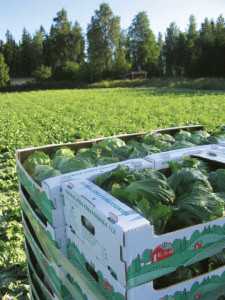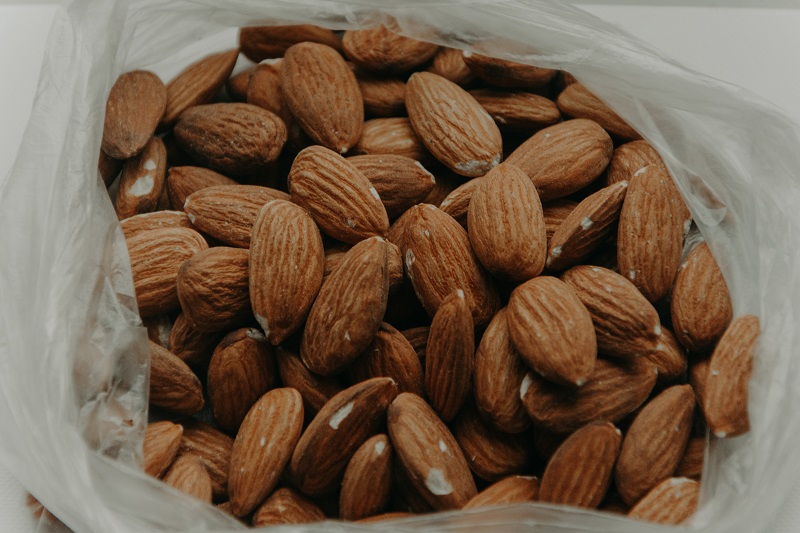Find Out How E. Coli And Salmonella Work In Spinach And Lettuce

Research on E. coli and Salmonella in lettuce and spinach will help industry make better decisions on growing practices, risk reduction, and regulatory and food safety policies.
Spinach and lettuce are high-value leafy vegetable crops that are grown extensively in California. Because these crops have been subject to periodic E. coli and Salmonella contamination, it is critical to develop practical information on how these bacteria operate in these specific cropping systems. Prior to our multi-year study, few researchers examined the ecology and biology of E. coli and Salmonella under real-world leafy green production environments, and no such studies were conducted in coastal California.
The University of California Cooperative Extension facility in the Salinas Valley enabled researchers to study E. coli and Salmonella under commercial coastal California conditions. Applied field-oriented research is also needed so that industry and regulators can make informed decisions on growing practices, risk reduction and audit compliance metrics, and regulatory food safety policies for the field. The research program was designed to provide answers to several questions regarding human pathogenic bacteria in the field.
1. If bacteria-contaminated water or organic material is in the field at planting, will germinating seedlings become infested? Will bacteria end up on the harvested commodity?
Various E. coli strains applied as water-based sprays (simulating irrigation events) or mixed with sand and placed in mesh bags (simulating point sources of contamination) did not survive in soil for long periods of time under commercial growing conditions in the Salinas Valley. Spray or bag inoculum was not recovered, via direct plating, from the lettuce or spinach plants growing through inoculated soil or next to bag inoculum.
2. Does “internalization” of human pathogenic bacteria take place in leafy green crops grown under real-world field conditions?
“Internalization” is the phenomenon in which plant roots absorb microorganisms and transport them into above-ground leaves and stems. Some laboratory and growth chamber studies indicate leafy green plants can absorb E. coli in this way, resulting in contaminated leaves that could be eaten by the consumer.
We established trials on a commercial farm to investigate internalization under field conditions. When various generic E. coli strains were inoculated onto spinach roots by using a subsurface drip irrigation system, the above ground foliage did not test positive for the E. coli strains when using direct plating methods.
Surface sterilizing plants with mercuric chloride followed by enrichment culture resulted in only one of 80 plants being positive for our generic E. coli strains. Based on this experiment, we believe that internalization of E. coli does not occur in leafy vegetables grown under field conditions.
3. What is the likelihood of bacterial survival if mature leafy green crops are contaminated and are then disked into the soil?
Trials were established on a commercial farm to investigate E. coli survival on crop residues under field conditions. Lettuce or spinach was grown by the farmer.
At crop maturity, replicated blocks were inoculated with high levels of generic E. coli as liquid inoculum or attenuated E. coli O157:H7 as liquid inoculum. Immediately following the foliar inoculation sprays, the plants in each plot were incorporated into the soil with a tractor and disk. No other field production steps were taken until the field was irrigated later in the summer.
Both inoculated strains were recovered from the soil and crop residue samples. Bacterial populations generally increased within the first week after inoculation and then gradually declined. However, in the undisturbed field we recovered E. coli from soil for a long period of time, more than 85 days post-inoculation (dpi). Despite an additional application of water at 95 days dpi and disking at 103 dpi, bacterial numbers did not reach the limit of detection even after 105 dpi. Recovery of attenuated O157:H7 was lower, overall, than recovery of generic E. coli.
4. Since bacteria apparently can survive on crop residues, what can be done in the field to enhance bacterial degradation and decline?
Other studies were conducted to see if production practices could enhance death and decline of foodborne pathogens on lettuce or spinach crop residues. We simulated the contamination of lettuce by inoculating mature, commercially grown crops with generic E. coli and Salmonella. Lettuce plots were then differentially treated by mowing, ring-rolling, or leaving the contaminated crop undisturbed.
After a holding period, the contaminated crops were disked into the soil. One set of plots, including all the soil treatments, was subject to an irrigation treatment one week after disking. E. coli and Salmonella survival was monitored by sampling soil plus crop residue beginning with the day of incorporation and then at 1, 6, 11, 20, and 48 days post incorporation.
After 21 days, a second lettuce crop was planted into the original plots and plants were sampled at thinning stage (27 days after emergence) to evaluate for transference of the inoculated strains to this replanted crop. Following incorporation of the first crop, target bacteria were quantifiable only in a few plots from the first sampling date, but were recovered by sample enrichment from most plots at all sampling dates up to 48 days after inoculation. No second crop lettuce plants in any of the plots tested positive for E. coli, and only a few second crop plants tested positive for Salmonella. Leaving the crop residue above ground and exposed to the sun and wind may help in decreasing bacterial survival.
This research was conducted by Steven Koike, Trevor Suslow, and Michael Cahn, all of the University of California. They acknowledge the support of the Center for Produce Safety, California Leafy Greens Research Board, and the leafy greens industry in California.










